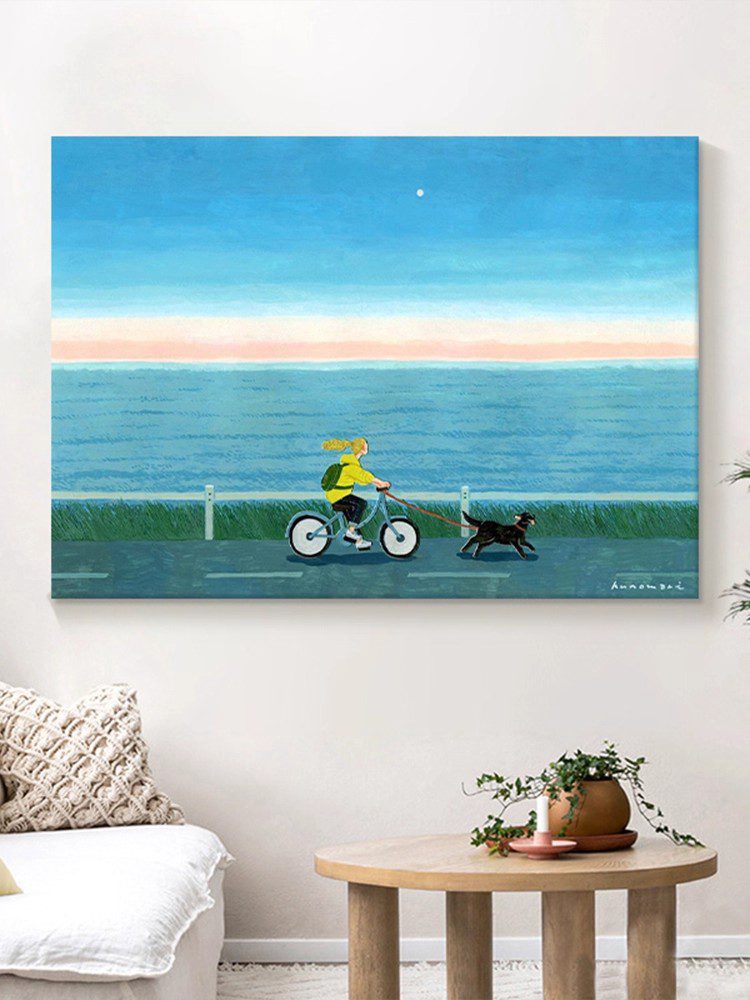Mastering Landscape Composition in Hand-Painted Oil Art: Essential Framing Techniques
Creating compelling landscape oil paintings begins with intentional framing—the art of selecting and arranging visual elements to guide the viewer’s eye and evoke emotion. Below are strategies to refine your approach to scene selection, balance, and focal points, ensuring your work resonates with depth and narrative.
Selecting a Scene with Emotional and Visual Impact
- Identifying a Dominant Mood: Before painting, assess the atmosphere of the location. Is the scene serene, dramatic, or mysterious? A misty morning forest might inspire calmness, while a stormy coastline could convey tension. Choose elements that reinforce this mood, such as soft lighting for tranquility or jagged rocks for conflict.
- Capturing Unique Light Conditions: Light transforms landscapes, so observe how it interacts with surfaces. Golden-hour sunlight casts warm, elongated shadows ideal for emphasizing texture, while twilight’s cool tones create contrast. Even midday light can be striking if paired with reflective elements like water or glassy leaves.
- Incorporating Movement: Static scenes risk feeling flat. Include dynamic elements like flowing rivers, swaying trees, or drifting clouds to add energy. For example, a field of wheat bending in the wind suggests life and rhythm, while still water might feel meditative.
Balancing Elements Through Compositional Rules
- Rule of Thirds Adaptation: Divide your canvas into a 3×3 grid (mentally or with light guidelines) and place key elements along these lines or intersections. Position a horizon line on the lower third to emphasize a dramatic sky, or align a tree with a vertical third line to create stability. Avoid centering all elements, which can feel static.
- Leading Lines and Pathways: Use natural or man-made lines—roads, rivers, or fence posts—to direct attention toward the focal point. A winding path through a forest invites the viewer to “enter” the scene, while a straight road leading to distant mountains creates depth. Ensure lines don’t compete by varying their thickness or color.
- Foreground, Midground, Background Layering: Establish depth by organizing elements into three planes. Place detailed objects (like rocks or flowers) in the foreground, a recognizable feature (a barn or tree) in the midground, and softened shapes (mountains or clouds) in the background. This hierarchy creates dimensionality and guides the eye through the scene.
Creating a Strong Focal Point to Anchor the Viewer
- Contrast and Isolation: Make your focal point stand out through color, value, or detail. A single red barn in a field of green grass draws immediate attention, while a lone tree against a pale sky becomes the centerpiece. Use sharper edges or higher contrast around this area to differentiate it from softer surroundings.
- Size and Scale: Enlarge or simplify the focal element relative to others. A massive boulder in a stream will dominate the composition, whereas a tiny figure on a hillside might symbolize insignificance or solitude. Adjust proportions to align with the scene’s emotional intent.
- Directional Cues: Surround the focal point with subtle visual arrows. For example, branches angling toward a sunset or birds flying toward a mountain peak reinforce where the viewer should look. Avoid overcrowding these cues, which can dilute their effect.
Adapting to Natural Frameworks and Unexpected Opportunities
- Natural Framing Devices: Use overhanging branches, archways, or windows to “frame” the main scene. This technique adds context and depth, as if the viewer is peeking through a portal. For instance, painting a lake visible through a gap in trees creates intimacy and focus.
- Weather and Seasonal Variations: Embrace transient conditions like frost, autumn leaves, or rain to add uniqueness. A snow-covered landscape feels stark and quiet, while spring wildflowers inject vibrancy. Seasonal changes also alter color palettes, helping you explore new tonal relationships.
- Simplifying Complex Scenes: Overcrowded views can overwhelm both artist and viewer. Edit elements by asking, “Does this contribute to the story?” Remove distracting power lines, excess foliage, or secondary buildings to clarify the composition. Sometimes, less detail in certain areas (like a blurred background) strengthens the focal point.
By integrating these techniques, you’ll transform ordinary scenes into visually engaging narratives. The interplay of framing, balance, and focus ensures your landscapes not only capture reality but also evoke the emotional essence of a place, inviting viewers to linger and explore.
